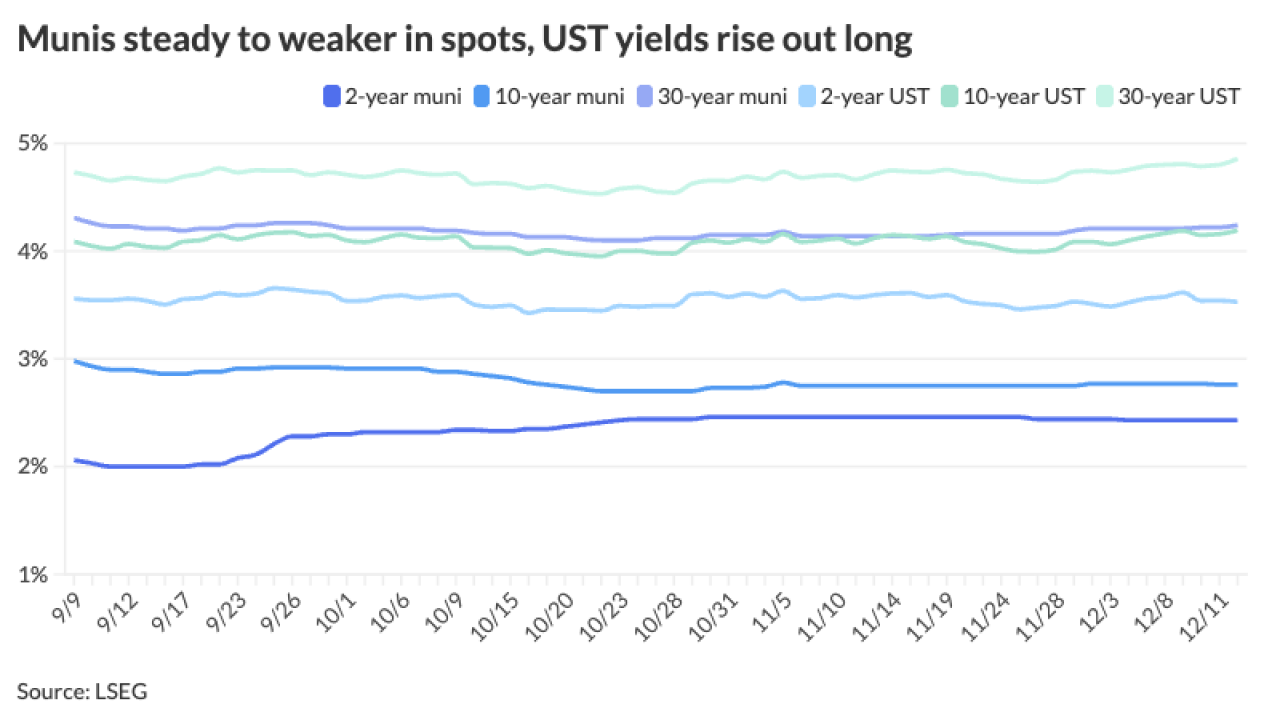
State governments are failing at comprehensively tracking how much natural disasters cost, which makes it challenging to budget effectively, Pew Charitable Trust said in a report.
Pew
Pew's research revealed "data on public disaster spending is lacking, states' typical budget approaches have not adapted to recent disaster trends, and efforts to reduce the loss of life and property, which could help control rising costs in the long term, are inconsistently and insufficiently funded," said Caitlin Wan Smith, an officer with Pew's managing fiscal risks project.
As disasters have grown in frequency and severity, so too has the strain on public finances and the urgency to update budgeting practices, especially at the state level, to help public officials plan for changing spending needs, Pew analysts said in the report.
The number of natural disasters costing more than $1 billion rose from seven per year from 1980 to 2019 to 23 annually from 2020 to 2024, according to the Pew report. In just the past five years, the damage caused by all major disasters cost a combined $746.7 billion, nearly 75% of the previous decade's total and more than double the $335.3 billion price tag for the entire 1990s, the report states.
Pew recommended three strategies to improve disaster budgeting: measure the total impact of natural disasters on state budgets across all agencies and activities; manage disaster funding in a manner that ensures availability of funds when needed and that minimizes disruption from the year-to-year volatility of disaster costs; and mitigate future risks by investing in, requiring and providing incentives for activities that can reduce the harms associated with disasters.
"We are recommending that states measure data comprehensively," Smith said. "We are talking about measuring a spectrum of activities, and not just response and recovery efforts, but also spending on mitigation and preparedness."

The data also needs to be collected uniformly and regularly by creating a system for all agencies, not just the emergency management agency, so the same costs are being measured by all agencies, Smith said.
The total costs of disaster management are unknown, because the states aren't comprehensively tracking disaster spending, "leaving gaps in the information that policymakers use to make financial planning decisions," Pew analysts wrote.
"Many states are already engaged in some of the practices we are recommending," Smith said. "States can use these strategies to build on what they are doing."
Pew didn't conduct a 50-state analysis looking closely at how each state tracks natural disaster expenses, Smith said, but the think tank did cite individual examples of states employing the kind of practices Pew would like to see adopted.
For instance, California tracks the $2.7 billion allocated for wildfire mitigation and prevention on a dashboard, she said.
"States budget for disasters reactively, waiting for catastrophes to strike, because disasters and their costs are difficult to predict," according to the Pew report. "But that means disaster spending decisions are made outside of, and without the analysis and deliberation of the formal budget process."
As a result, Pew analysts said, states are often "ill-prepared for the fiscal impact of severe disasters and forced to direct funds from other policy priorities."
North Dakota and Montana allocate specific funds for disaster relief, which alleviates strain on the states' operating budgets from unexpected disaster expenses, a practice Pew lauded. North Dakota deposits oil revenues in its disaster relief fund, while Montana allocates excess general fund revenue, of up to 6% of general fund expenditures, to a fire suppression fund.
Given most states legislative processes are well underway or nearing the finish line, Colin Foard, director of Pew's fiscal risk project, doesn't expect changes would come this year, and comprehensive changes could take years to adopt.
"We envision the changes as a stair-step process," Foard said.





